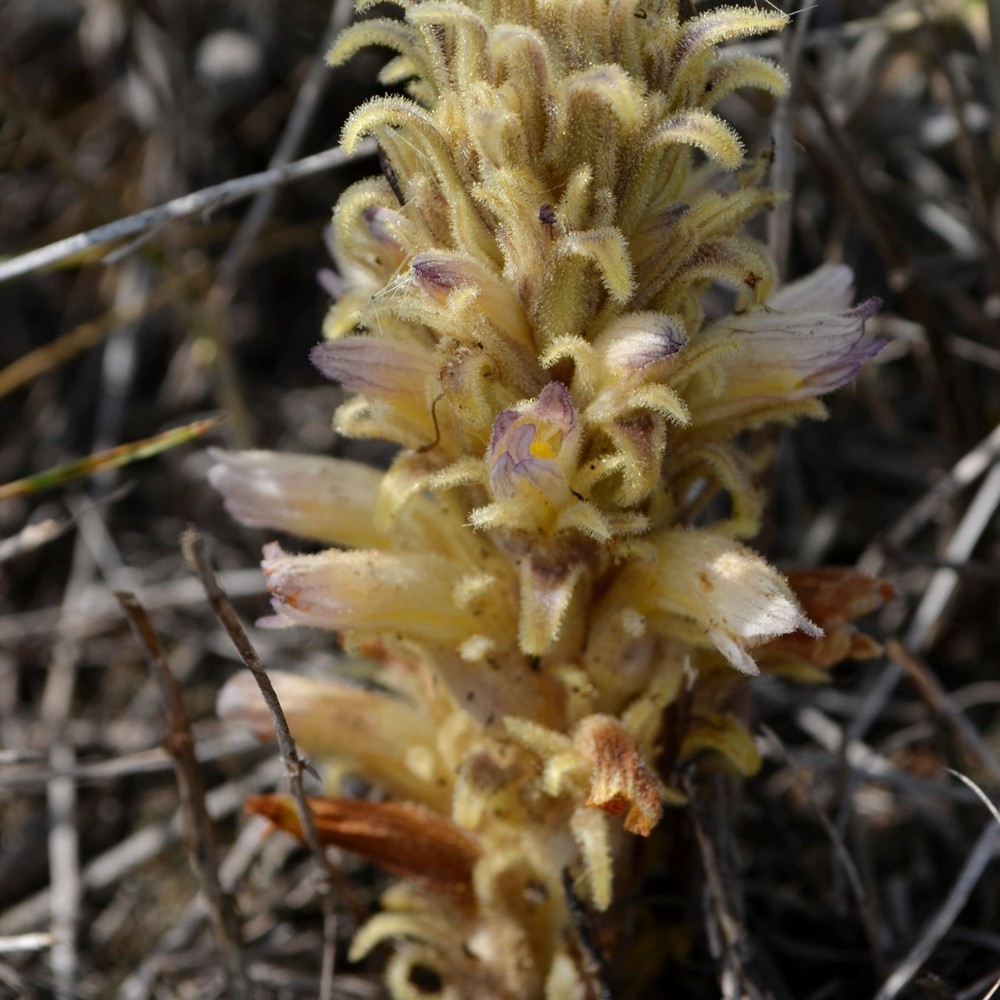Louisiana broomrape
(Aphyllon ludovicianum)

Description
Orobanche ludoviciana, the Louisiana broomrape or prairie broom-rape, is a species of plant in the family Orobanchaceae. It was first described and named by Thomas Nuttall in 1818. This species is parasitic on neighboring plants via its roots; common host species include gumweed and wormwoods, though some other Asteraceae are also used. They grow from 1-3 dm often without branches. Leaves are scales and numerous. The inflorescences are many-flowered spikes that occupy a half to a third of the shoot. Flowers sessile or with small up to 15mm pedicels for the lower flowers. Calyx subtended by 1 or 2 bracts, which are bilabiate. Corolla is 1.5-2.5 cm and often a violet-like color. 2n=24, 48, 72, 96. It typically grows in sandy soil. It grows throughout the central plains of North America and northwest into British Columbia and Oregon. Found from June through August. Listed as endangered in Wisconsin and threatened in Illinois and Indiana. Broomrapes are generally small, only 10–60 centimetres (4–24 inches) tall depending on species. They are best recognized by the yellow- to straw-coloured stems completely lacking chlorophyll, bearing yellow, white, or blue snapdragon-like flowers. The flower shoots are scaly, with a dense terminal spike of 10-20 flowers in most species, although single in one-flowered broomrape (Orobanche uniflora). The leaves are merely triangular scales. The seeds are minute, tan or brown, blackening with age. These plants generally flower from late winter to late spring. When they are not flowering, no part of the plants is visible above the surface of the soil. As they have no chlorophyll, the broomrapes are totally dependent on other plants for nutrients. Broomrape seeds remain dormant in the soil, often for many years, until stimulated to germinate by certain compounds produced by living plant roots. Broomrape seedlings put out a root-like growth, which attaches to the roots of nearby hosts. Once attached to a host, the broomrape robs its host of water and nutrients. Some species are only able to parasitise a single plant species, and they are often named after the plant they parasitise, such as ivy broomrape (O. hederae) being restricted to parasitising ivy. Others can infect several genera, such as the lesser broomrape O. minor, which lives on clover and other related Fabaceae.
Taxonomic tree:







